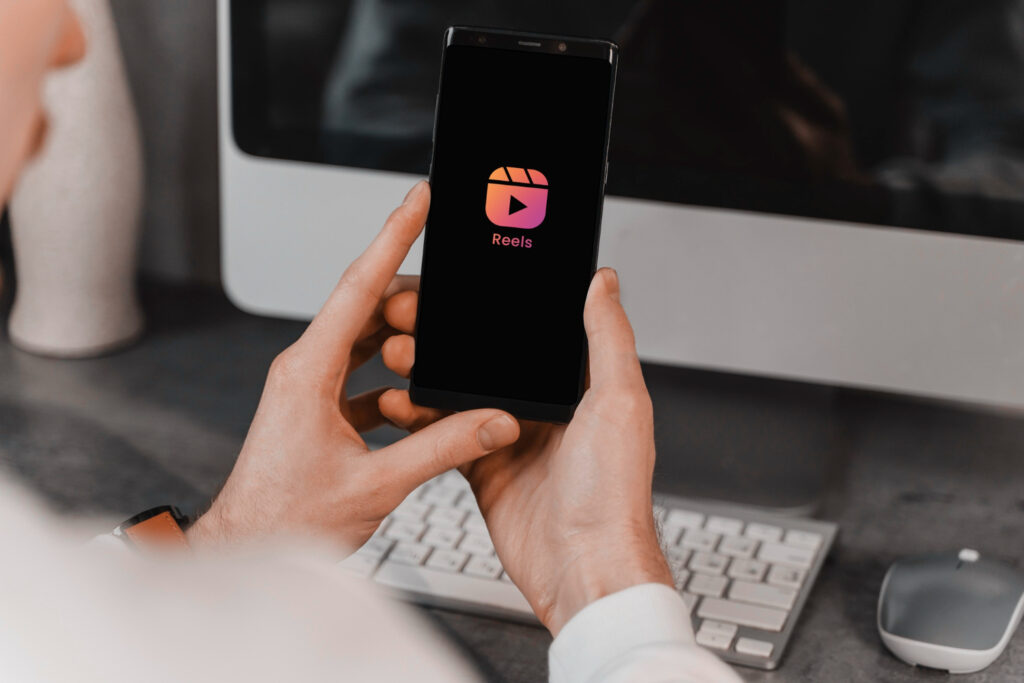
Welcome to the intersection where cutting-edge tech meets the age-old challenge of finding the perfect hire.
Yes, we’re talking about spicing up your recruitment game with ChatGPT. Quick to gauge, precise to pinpoint.
Still skeptical? Hang tight because we’re about to debunk myths, slice through the jargon, and give you the 411 on turning ChatGPT into your secret hiring weapon.
Let’s dive in.
What is ChatGPT?
ChatGPT. It’s the talk of the town. But what is this buzzword? And how will it impact hiring across industries?
Born from OpenAI’s labs, ChatGPT is an advanced language model that can understand and generate human-like text based on the prompts you feed it.
It’s through the power of artificial intelligence (AI) and machine learning that ChatGPT can simulate human-like conversions. For instance, you ask it a question. And it gives you an answer. Neat, huh?
Screenshot by Brandon Lee. Source: ChatGPT
But today, industry leaders are leaning into ChatGPT to create text for all kinds of situations, including:
- Marketing campaigns
- Drafting documents
- Creating chatbots
- Writing content
- Hiring talent
That’s right. ChatGPT opens the door to using AI-powered tools to transform the hiring process and management through project management workflow software. And who doesn’t love to work smarter (instead of harder)?
By incorporating ChatGPT into your recruitment efforts, you can streamline the tedious hiring tasks that eat away at your precious time and resources. And for the cherry on top, business process automation reduces human bias and provides a consistent and fair evaluation of all candidates.
Integrating ChatGPT into your hiring workflow enhances efficiency, accuracy, and scalability. In other words, it allows your HR teams to focus on higher-value tasks and build a more agile and competitive recruitment process.
What’s not to love?
5 Ways to Leverage ChatGPT to ?Cultivate Successful Hiring Practices
Here are five simple ways you can use ChatGPT to improve your hiring process.
1. Write job descriptions that attract the right candidates
One of the most time-consuming aspects of hiring personnel is writing compelling job descriptions that stand out from the rest.
Oh, and don’t get us started on the different requirements for each platform. Job posting websites like Indeed and Monster all have different requirements. Sigh.
Using ChatGPT, you can tailor-make custom job postings for different websites. For example, if Indeed requires companies to create 1500-character job descriptions, you can write a prompt to match their requirements.
“Write a 1500-character job description for a marketing manager position that includes bullet points and a summary.”
Screenshot by Brandon Lee. Source: ChatGPT
If you want to post a job on Upwork aimed more toward freelancers, you can write a ChatGPT prompt that reflects your preferences.
“Write a job description for a freelancer writer that has experience in B2B SaaS”
Screenshot by Brandon Lee. Source: ChatGPT
You can even translate your job descriptions into different languages if you’re hiring for a global (or remote) position.
“Translate the job description into Spanish”
Screenshot by Brandon Lee. Source: ChatGPT
2. Create a list of engaging interview questions
Beyond candidate experience and rehearsed answers, the right interview questions unlock genuine insights, dreams, and ambitions from your potential candidates.
Finding a qualified candidate on paper is one thing. But making sure they vibe with your company culture is another. Dive deeper, ask right, and gauge their true fit.
Engaging questions steer the dialogue, fostering a relaxed environment where the candidate feels more open to sharing.
So if you ??need a spur-of-the-moment question, or a twist on a classic, ChatGPT can deliver dozens of ideas in a matter of seconds.
And the best part? ChatGPT isn’t bound by personal biases or experiences. It’s a melting pot of perspectives, offering a diverse range of questions you might never have considered. Genius.
Here’s how to do it:
- Set your criteria. Let ChatGPT know what you’re looking for. Whether it’s a creative role, a leadership position, or a technical job, the more specific you are with the input, the better the output..
- Ask away. Prompt ChatGPT with something like, “Suggest some engaging questions for a software engineer interview.” And voila.
- Refine and review. ChatGPT will spit out a bunch of questions. Always review them to confirm they align with your company values and the specific role requirements.
- Feedback loop. The beauty of AI is its iterative nature. Tell ChatGPT which suggestions you loved and which missed the mark. Over time, this feedback can make your AI-enhanced brainstorming even sharper.
3. Draft emails and offer letters to potential candidates
Most hiring communication takes place over email. And you want to make a good first impression.
Why? Hiring is a two-way street. At the end of the day, you need to say yes to the potential hire. And the candidate needs to say yes to you. That’s why, when reaching out to potential candidates or crafting the perfect offer letter (or email templates), striking the right tone is key.
That’s where ChatGPT saved the day.
- Find the perfect tone. Whether you’re looking for a professional demeanor or a touch of friendly enthusiasm, ChatGPT can help you nail the tone. Every. Time.
- Customization at scale. Are you sending out multiple emails per day? ChatGPT can help you give each one a personal feel (even if it’s the hundredth you’re sending that day).
- Reduce human errors. Beyond grammar, ChatGPT adds clarity, relevance, and precision to your communication.
Here’s a simple prompt to show you what ChatGPT can do:
“Write an enthusiastic response to a candidate who sends a thank you email after an interview”
Screenshot by Brandon Lee. Source: ChatGPT
4. Generate simple code to create an HR chatbot assistant
Are you sick and tired of answering the same question every day? Or spending hours on tedious to-dos that you dislike?
Imagine cutting through piles of repetitive tasks with an efficient chatbot assistant. Sounds too technical and out of reach, right?
Think again. With ChatGPT, you don’t need to be a coding wizard to create a custom chatbot for your HR needs. All you require is a sprinkle of imagination and the right prompt.
Automated chatbot assistance means faster responses to frequent inquiries, guaranteeing a smoother HR workflow. And that’s right, there’s no coding experience required. Rather, you’re instructing, not coding (read: guiding AI with the right input).
Whether it’s onboarding, benefits queries, creating boolean search strings, or interview scheduling, you can craft your chatbot to align with your specific HR challenges.
Here’s an example prompt:
“I’d like to create a simple chatbot script for HR. Its main tasks should include answering frequently asked questions about leave policies, helping schedule interviews, and guiding new hires through initial paperwork.”
And voila. ChatGPT will churn out a basic framework or script to meet your specific requests.
Screenshot by Brandon Lee. Source: ChatGPT
While this won’t fully replace full-blown chatbot development platforms, it’s an excellent starting point. In other words, this solution is ideal for HR teams that are ready to open the door to what business process automation can bring to the table.
And spoiler alert. It’s plentiful. It’s free. And it can help you with screening candidates. What else could you ask for?
5. Integrate ChatGPT into your payroll software
Using ChatGPT for hiring presents a compelling perspective on how AI-powered tools can also revolutionize the payroll software landscape.
Integrating ChatGPT into your existing payroll software can significantly enhance user experience and operational efficiency. Even the “Big Four” accounting behemoth Ernst & Young acknowledges the benefits of modernization of payroll employee care.
For instance, you can provide real-time support to employees when they have questions about their payroll, tax deductions, and other related matters. No more employee confusion over the very complicated payroll system.
The result? Your HR team can focus on the bigger picture. Plus, with ChatGPT handling data entry and wage calculations, your payroll process becomes sleeker, more accurate, and downright efficient.
Talk about modern problems, meet modern solutions.
Best Practices: Make Sure You Verify Your ChatGPT Outputs
As you can already tell, ChatGPT is an incredible technology. Yet, it does come with its share of drawbacks. If you plan on using ChatGPT for hiring, here are some things to be aware of:
- Make sure you verify all of your ChatGPT outputs. This tool can generate false and misleading information. Measure twice before going all in.
- Refine and revise your responses. Giving follow-up responses to ChatGPT makes it smarter and will generate more precise outputs.
- Make sure your AI outputs align with your diversity, equity, and inclusion (DEI) standards. It’s wise to check your outputs against bias before moving on in the candidate screening process.
- Never use ChatGPT to make final decisions. Keeping the human element in decision-making is key to minimizing mistakes in the hiring process.
- Don’t reveal any confidential information. Protecting your data is paramount to avoiding a cyberattack or data breach.
Follow ChatGPT Influencers for More Inspiration
It may take some time to get used to ChatGPT. In the meantime, you can follow popular ChatGPT influencers to take advantage of new ideas and methods for using the tool for hiring.
You can usually find ChatGPT influencers on LinkedIn. They actively share ChatGPT prompts that’ll help take your hiring game to the next level.
Here’s an awesome example from Destiny Lalane:
Wrapping Up
We’ve debunked the myths, sifted through the jargon, and handed you the secret recipes to unlock your hiring potential.
Whether it’s crafting perfect emails, vetting resumes, or adding that dash of automation to your payroll, ChatGPT is here. And it’s ready to streamline your recruiting process once and for all.
Happy hiring!
Featured Image by Brooke Cagle on Unsplash
The post Cultivating Successful Hiring Practices: Best Strategies for Harnessing ChatGPT’s Power appeared first on noupe.



